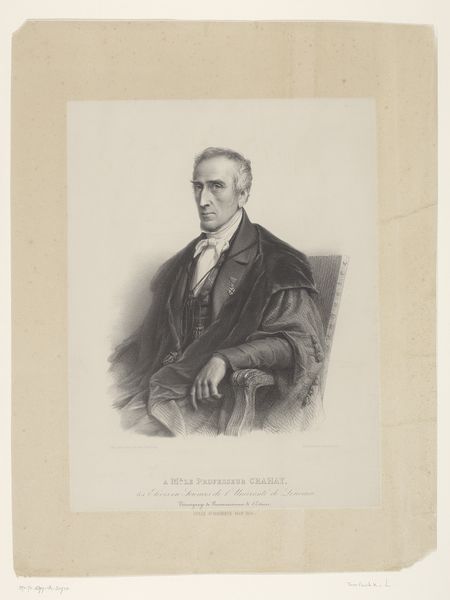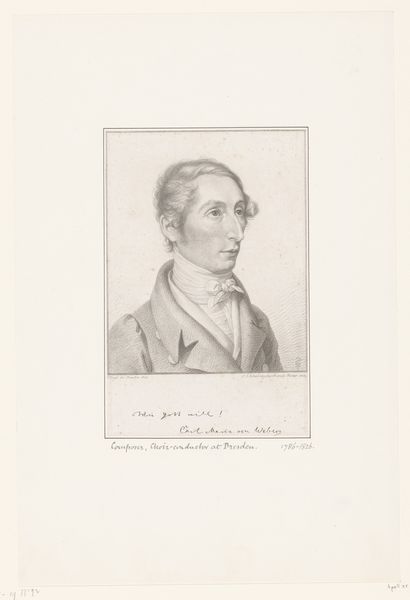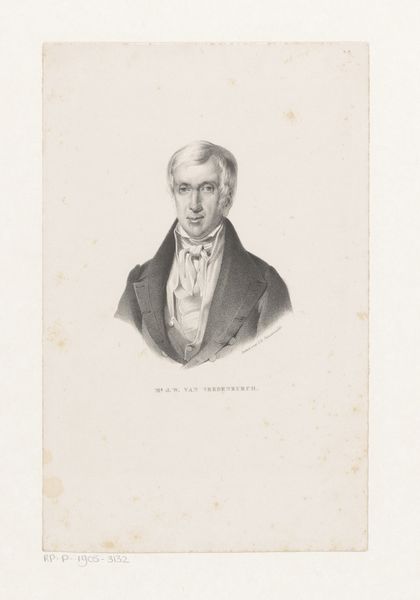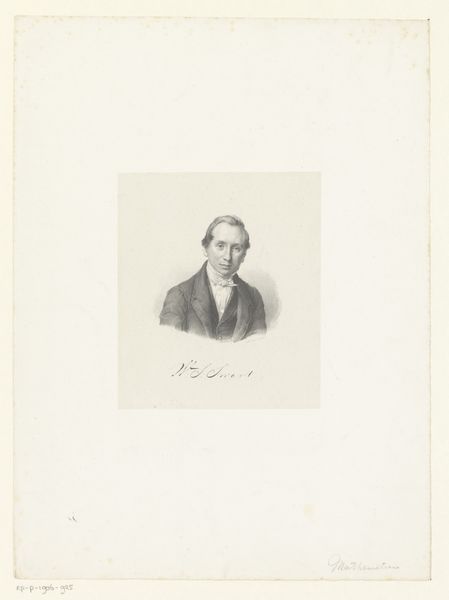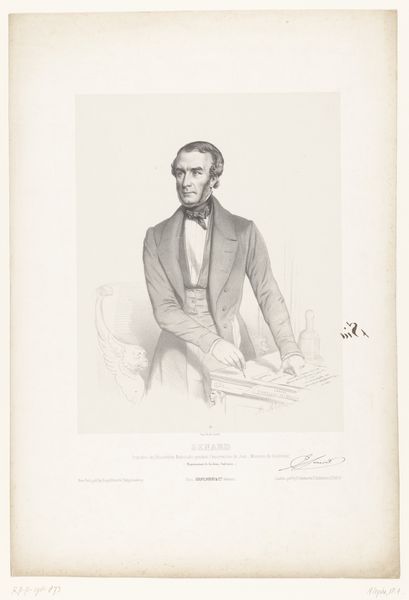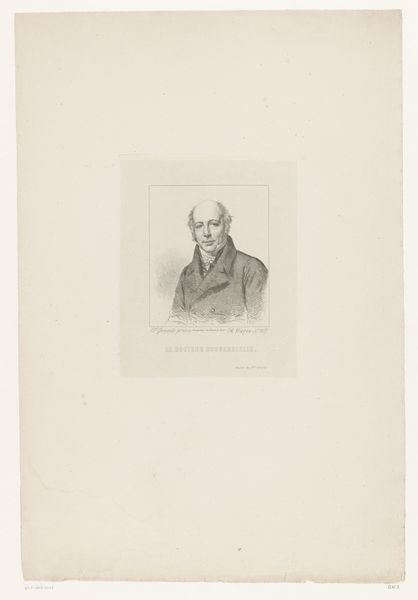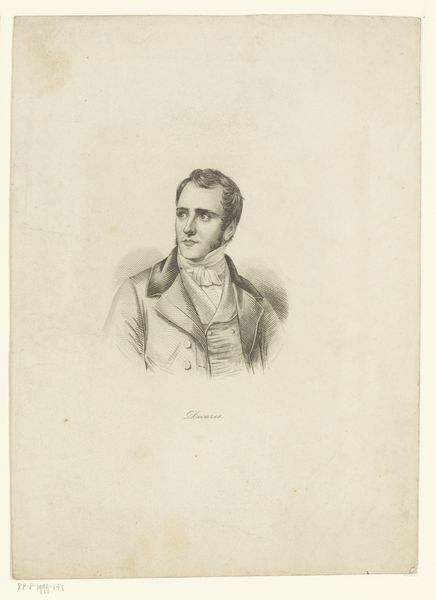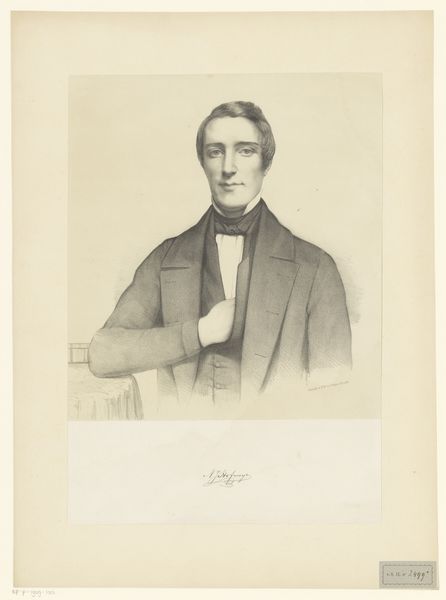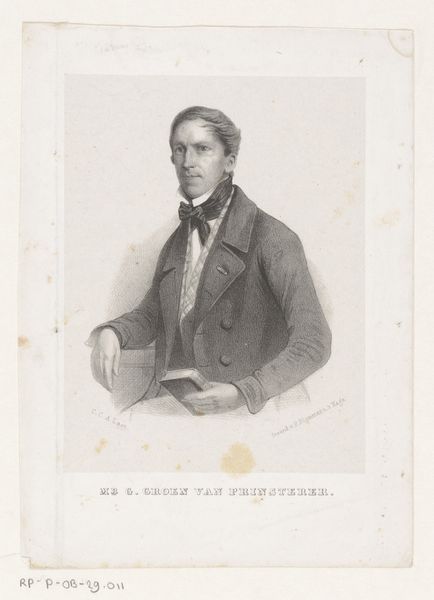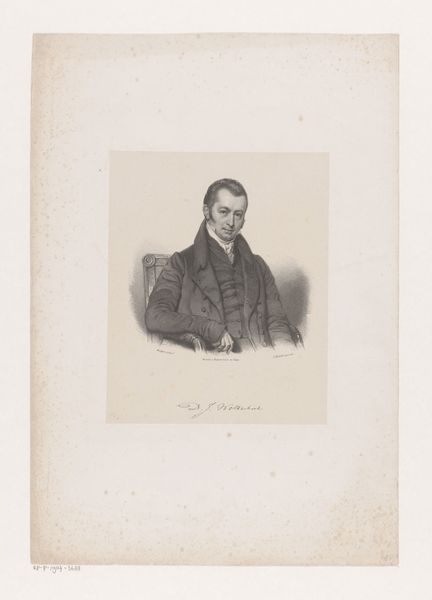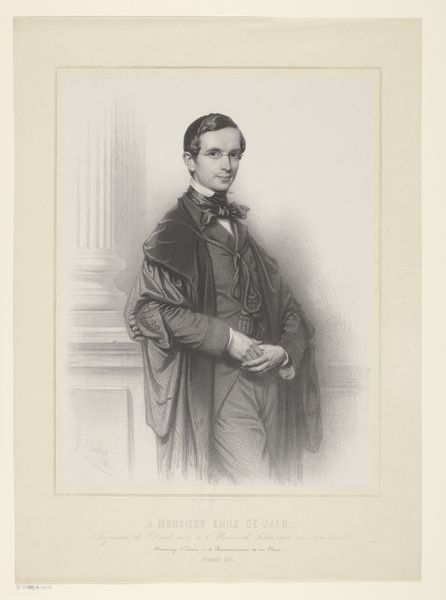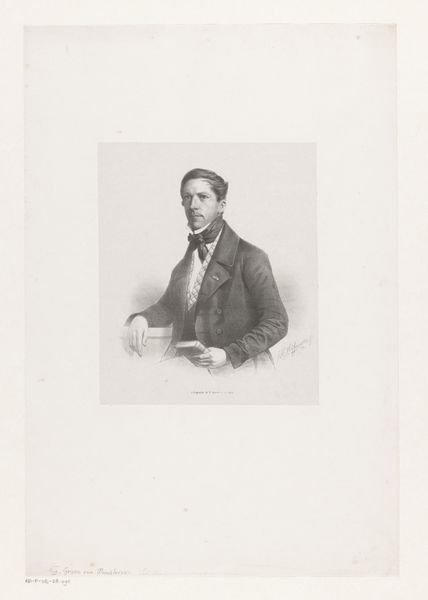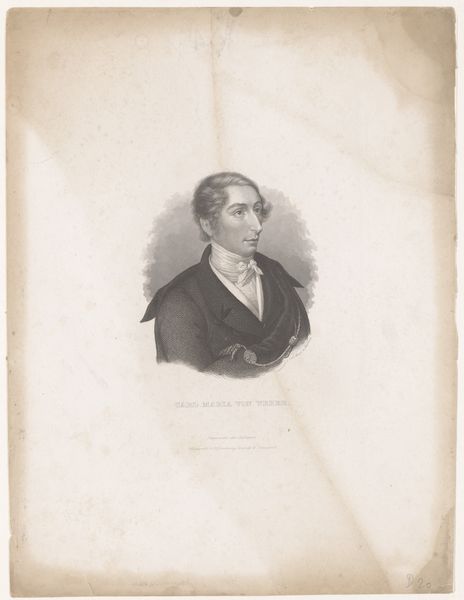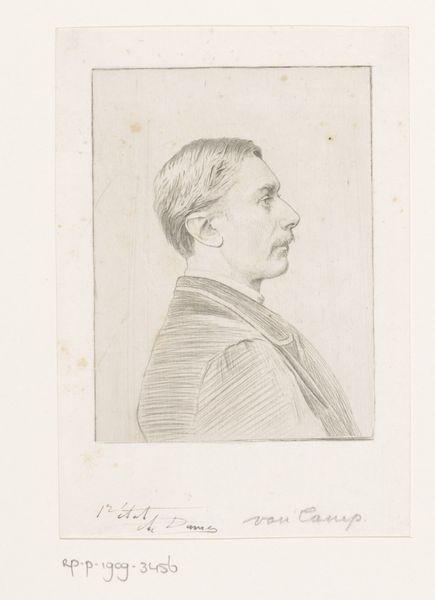
Dimensions: height 235 mm, width 176 mm
Copyright: Rijks Museum: Open Domain
This portrait of Johann Friedrich Overbeck was made by Léopold Flameng using a printmaking technique. Printmaking in the 19th century facilitated the mass reproduction of images, making art more accessible, but also raising questions about originality and value. The precise lines and delicate shading you see here were achieved through careful etching or engraving on a metal plate. The artist would have used specialized tools to incise the design, with the depth and density of the lines determining the tonal range of the final print. This was a time-consuming process demanding great skill and precision. The final print would have been one of many, each bearing the mark of the artist's hand, yet also a product of mechanical reproduction. Consider how this contrasts with a unique artwork like a painting or sculpture. The availability of prints like this reflected a changing art market, and the rise of a new middle class eager to consume culture. The very nature of printmaking democratized art, challenging traditional hierarchies. Ultimately, understanding the labor and social context behind this image encourages us to reconsider our own assumptions about art, value, and originality.
Comments
No comments
Be the first to comment and join the conversation on the ultimate creative platform.
